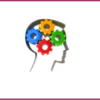Adult Learning: Mental Skills
Bloom’s Taxonomy is not just for elementary school teachers. The three domains of the taxonomy apply to adult education as well. In this manual, we will pay attention to the cognitive domain. This is the domain of knowledge and intellect, and it is the main focus of most educators.
Bloom’s Taxonomy
Bloom’s Taxonomy has been a staple of educators for decades, particularly in the cognitive domain. Educators of both children and adults should be familiar with the theory’s history and how it has changed over the years. A fundamental understanding of Bloom’s Taxonomy and Adult Learning: Mental Skills is essential, particularly when attempting to implement it in the classroom.
Bloom’s Theory
The learning hierarchy is the focus of Bloom’s theory. In the hierarchy, students master the basic stage of the learning domain before moving on to the next one. Like walking up a flight of stairs, students eventually manage to reach the top. As they master each level, they discover the ability to implement learning strategies and improve their skills. In this theory, teachers use the taxonomy to guide the students through to the higher levels of thinking and understanding. The three domains work together to create learning objectives, guide activities, and develop effective assessments.
Each domain identified is broken down into levels or categories, with specific behaviors, activities, and example words that indicate when students have mastered skills from each level of the domain.
History
Benjamin Bloom was an education psychologist who, with other experts, developed a taxonomy of learning, in 1956. The purpose of the taxonomy was to provide a framework of educational goals and establish their specific outcomes. Educators now had a rubric by which to measure learners’ progress. The three domains that Bloom and his team discovered were cognitive, affective, and psychomotor. The original taxonomy was the cognitive domain, shown below.
With our “Adult Learning: Bloom’s Taxonomy – Cognitive Domain” course, you will discover the specifics of how the cognitive domain increases intellectual capability.
Course Objectives:
- Understand Bloom’s Taxonomy
- Explain the cognitive domain
- Explore the two cognitive domains
- Explain types of knowledge
- Identify training in the cognitive domain









Reviews
There are no reviews yet.